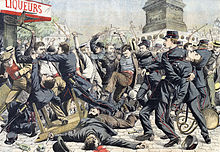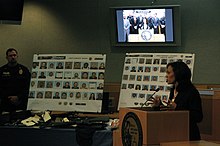GANG CULTURE & RACISM FOLLOW THE SAME PROTOCOLS.
THIS MORNING I HAD THE PLEASURE OF LISTENING TO THE BREAKFAST CLUB, THE GUEST OF THE SHOW WAS NO OTHER THAN NIPEY HUSSLE HIMSELF. THE BROTHA MADE A LOT OF SINCE FROM BEGINNING TO END. ONE THING THAT HAS BEEN ON MY MIND IS HOW RACISM IS SEPERATE FROM GANG CULTURE, IN THE SENCE THAT (NO POINTING THE FINGER AT ANY GROUP, WE ALL HAVE OUR HISTORY OF S.E.O.). WITH THTA SAID LET'S START WITH THE OBVIOUS HALF OF THIS CO VERSAT[ION THAT HAS ALLOWED ALL THIS NEGATIVE ENERGY TO EXIST.
RACISM:
WHAT IS RACISM AND HOW DID IT START?
Racism in the United States
| Part of a series of articles on |
| Racial segregation |
|---|
 |
| Segregation by region |
| Similar practices by region |
Racism in the United States has existed since the colonial era, when white Americans were given legally or socially sanctioned privileges and rights while these same rights were denied to other races and minorities. European Americans—particularly affluent white Anglo-Saxon Protestants—enjoyed exclusive privileges in matters of education, immigration, voting rights, citizenship, land acquisition, and criminal procedure throughout American history. Non-Protestant immigrants from Europe, particularly the Irish, Poles, and Italians, often suffered xenophobic exclusion and other forms of ethnicity-based discrimination in American society until the late 19th and early 20th centuries. In addition, groups like Jews and Arabs have faced continuous discrimination in the United States, and as a result, some people who belong to these groups are not identified as white. African Americans faced restrictions on their political, social, and economic freedom throughout much of US history. East, South, and Southeast Asians have also faced racism in America.
Major racially and ethnically structured institutions and manifestations of racism have included genocide, slavery, segregation, Native American reservations, Native American boarding schools, immigration and naturalization laws, and internment camps.[note 1] Formal racial discrimination was largely banned by the mid-20th century and over time, it came to be perceived as being socially and morally unacceptable. Racial politics remains a major phenomenon, and racism continues to be reflected in socioeconomic inequality.[note 2][2] Racial stratification continues to occur in employment, housing, education, lending, and government.
In the view of the United Nations and the U.S. Human Rights Network, "discrimination in the United States permeates all aspects of life and extends to all communities of color."[3] While the nature of the views held by average Americans has changed significantly over the past several decades, surveys by organizations such as ABC News have found that even in modern America, large sections of Americans admit to holding discriminatory viewpoints. For example, a 2007 article by ABC stated that about one in ten admitted to holding prejudices against Hispanic and Latino Americans and about one in four did so regarding Arab-Americans.[4] A 2018 YouGov/Economist poll found that 17% of Americans oppose interracial marriage, with 19% of members of "other" ethnic groups, 18% of blacks, 17% of whites, and 15% of Hispanics opposing it.[5]
Some Americans saw the presidential candidacy of Barack Obama, who served as president of the United States from 2009 to 2017 and was the nation's first black president, as a sign that the nation had entered a new, post-racial era.[6][7] The right-wing populist radio and television host Lou Dobbs claimed in November 2009, "We are now in a 21st-century post-partisan, post-racial society."[8] Two months later, Chris Matthews, an MSNBC host, said that President Obama, "is post-racial by all appearances. You know, I forgot he was black tonight for an hour."[9] The election of President Donald Trump in 2016 has been viewed by some commentators as a racist backlash against the election of Barack Obama.[10]
During the 2010s, American society has continued to experience high levels of racism and discrimination. One new phenomenon has been the rise of the "alt-right" movement: a white nationalist coalition that seeks the expulsion of sexual and racial minorities from the United States.[11] In August 2017, these groups attended a rally in Charlottesville, Virginia, intended to unify various white nationalist factions. During the rally, a white supremacist demonstrator drove his car into a group of counter-protesters, killing one person and injuring 19.[12][13] Since the mid-2010s, the Department of Homeland Security and the Federal Bureau of Investigation have considered white supremacist violence to be the leading threat of domestic terrorism in the United States.[14][15]
Racism[edit]
Racism is a systematized form of oppression by one race against another. Prejudicial attitudes existed between races for thousands of years, but systematized racial oppression first arose in the 1600s. Before this, slaves in various cultures were taken without racism as the basis – slaves were usually taken as a result of military conquest. But when European traders found that their superior technology in sailing ships and firearms gave them a tremendous advantage in Africa, they began plundering Africa's wealth and taking slaves. Slavers and slave owners tried to convince themselves that their African slaves had no previous culture, that they had been living as savages, which was false. White European Americans involved in the slave industry tried to justify their economic exploitation of black people by creating a "scientific" theory of white superiority and black inferiority. One such slave owner was Thomas Jefferson, and it was his call for science to determine the obvious "inferiority" of blacks that is regarded as "an extremely important stage in the evolution of scientific racism."[16] This was the start of systematized racism in the United States.
Definition[edit]
The word "gang" derives from the past participle of Old English gan, meaning "to go". It is cognate with Old Norse gangr,[2] meaning "journey."[3] It typically means a group of people, and may have neutral, positive or negative connotations depending on usage.[4][5][6]
History[edit]
In discussing the banditry in American history Barrington Moore, Jr. suggests that gangsterism as a "form of self-help which victimizes others" may appear in societies which lack strong "forces of law and order"; he characterizes European feudalism as "mainly gangsterism that had become society itself and acquired respectability through the notions of chivalry".[7]
A wide variety of gangs, such as the Order of Assassins, the Damned Crew, Adam the Leper's gang, Penny Mobs, Indian Thugs, Chinese Triads, Snakehead, Japanese Yakuza, Irish mob, Pancho Villa's Villistas, Dead Rabbits, American Old West outlaw gangs, Bowery Boys, Chasers, the Italian Mafia, Jewish mafia, and Russian mafia crime families have existed for centuries.
The 17th century saw London "terrorized by a series of organized gangs",[8]
some of them known as the Mims, Hectors, Bugles, and Dead Boys. These gangs often came into conflict with each other. Members dressed "with colored ribbons to distinguish the different factions."[9]
Chicago had over 1,000 gangs in the 1920s.[10] These early gangs had reputations for many criminal activities, but in most countries could not profit from drug trafficking prior to drugs being made illegal by laws such as the 1912 International Opium Convention and the 1919 Volstead Act.[citation needed] Gang involvement in drug trafficking increased during the 1970s and 1980s, but some gangs continue to have minimal involvement in the trade.[11]
In the United States, the history of gangs began on the East Coast in 1783 following the American Revolution.[12] The emergence of the gangs was largely attributed to the vast rural population immigration to the urban areas. The first street-gang in the United States, the 40 Thieves, began around the late 1820s in New York City. The gangs in Washington D.C. had control of what is now Federal Triangle, in a region then known as Murder Bay.[13]
Current numbers[edit]
In 2007, there were approximately 785,000 active street gang members in the United States, according to the National Youth Gang Center.[14] In 2011, the National Gang Intelligence Center of the Federal Bureau of Investigation asserted that "There are approximately 1.4 million active street, prison, and outlaw gang members comprising more than 33,500 gangs in the United States."[15] Approximately 230,000 gang members were in U.S. prisons or jails in 2011.[15]
According to the Chicago Crime Commission publication, "The Gang Book 2012", Chicago has the highest number of gang members of any city in the United States: 150,000 members.[16] Traditionally Los Angeles County has been considered the Gang Capital of America, with an estimated 120,000 (41,000 in the City) gang members.[17]
There were at least 30,000 gangs and 800,000 gang members active across the US in 2007.[18][19] About 900,000 gang members lived "within local communities across the country," and about 147,000 were in U.S. prisons or jails in 2009.[20] By 1999, Hispanics accounted for 47% of all gang members, Blacks 31%, Whites 13%, and Asians 7%.[21]
In December 13, 2009, The New York Times published an article about growing gang violence on the Pine Ridge Indian Reservation and estimated that there were 39 gangs with 5,000 members on that reservation alone.[22]
There are between 25,000 and 50,000 gang members in Central America's El Salvador.[23]
The FBI estimates that the four Italian organized crime groups active in the United States have 25,000 members in total.[24]
The Russian, Chechen, Azerbaijani, Ukrainian, Georgian, Armenian, and other former Soviet organized crime groups or "Bratvas" have many members and associates affiliated with their various sorts of organized crime, but no statistics are available.
The Yakuza are one of the largest criminal organizations in the world. As of 2005, there are some 102,400 known members in Japan.[25]
Hong Kong's Triads include up to 160,000 members in the 21st century.[26] It was estimated that in the 1950s, there were 300,000 Triad members in Hong Kong.[27]




No comments:
Post a Comment